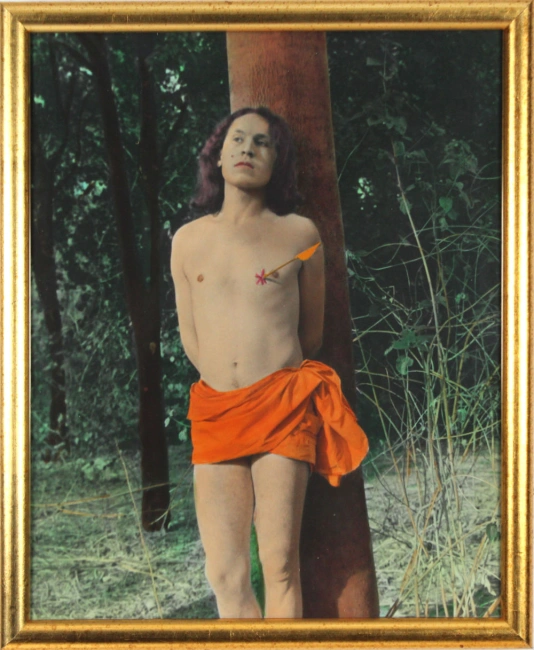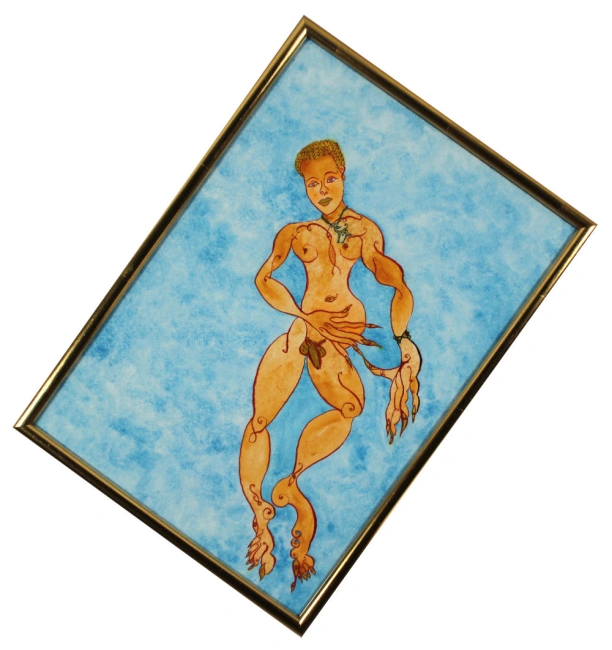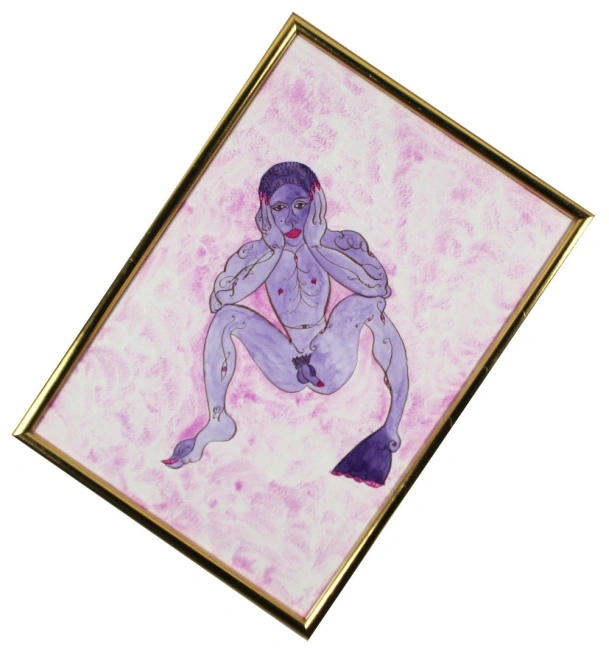Luigi Ontani
ZarathustrAsso
Year : 1997
Dimensions : cm 185x90x66
Technique : polychrome ceramic and pure gold
Exhibitions : showed in the exhibition "Alam Jiwa & Vanitas" at GAM Turin from 3-11-2021 until 30-01-2022
Authentication : authentication on photo by Luigi Ontani
Short Review
This type of works are called "Aesthetic Herms" by Luigi Ontani. All works of this type have references to the life of the character they intend to represent. The face is always that of Ontani with some variations that serve to identify the character. In this case the work is a union between two characters who influenced the world cultural life of the early twentieth century, namely the German philosopher Nietzsche and the painter Picasso. Ontani takes inspiration from the emblematic works of the two characters, "Thus Spoke Zarathustra" for Nietzsche and "Guernica" for Picasso. The union of the two names, Zarathustra and Picasso, gives "Zarathustrasso" which is the title of the work. As mentioned, the face is that of Ontani, but the moustache is that of the philosopher, behind the nape of the neck explodes the head of the horse from Guernica and below its hoof. Above the head Ontani places a crown of thorns in the shape of the mathematical symbol of infinity to symbolize the greatness of the two characters but above all a tribute to the philosopher's last writing, "Ecce Homo". At the base of the arms Ontani places two spherical bells whose tinkling recalls the mental disturbances that Nietzsche always suffered from and that drove him to madness. Frontally Ontani places a phallus, as is his habit between the irreverent and the ironic, and a sort of Tower of Babel to symbolize the places where Zarathustra was born and worked, who was a messianic character of an Iranian cult that originated between today's Afghanistan and Turkmenistan around the 15th century BC; but the date and places are not exactly certain since the relative tradition was essentially oral and not written. At the bottom Ontani places a winged foot, symbol of Mercury, as if to say that the messages of these two characters traveled quickly throughout the world.


























































